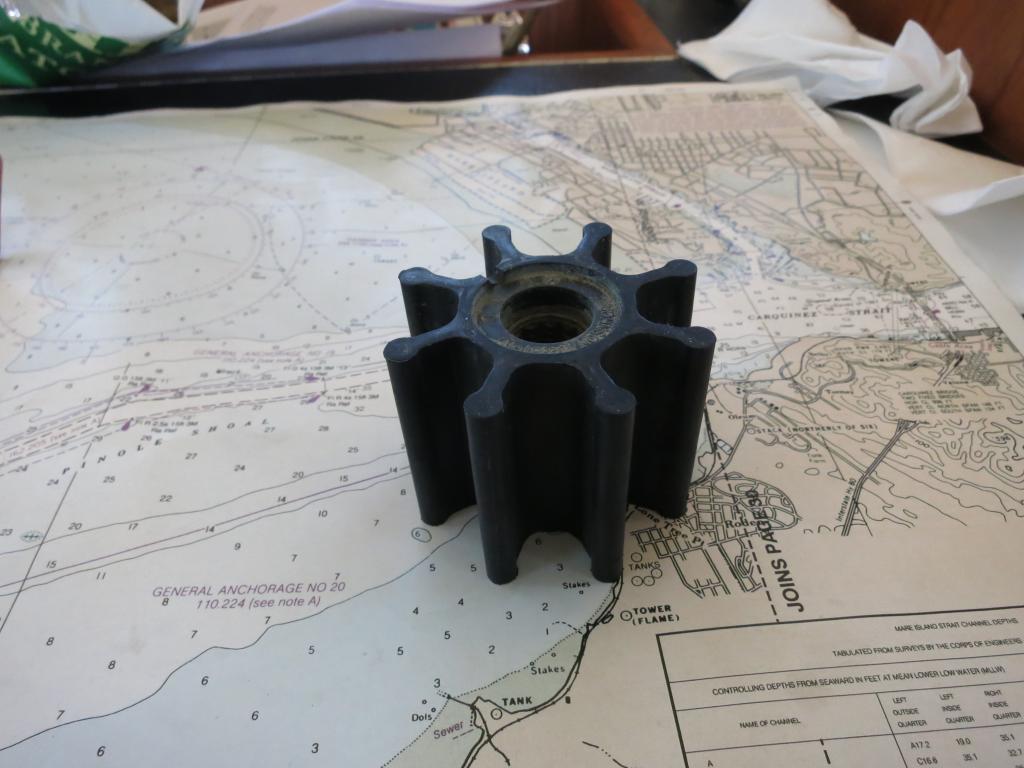On impellers, I don't particularly worry about them inside of about two years. I worry more if the boat has sat for many months as taking a set can cause cracks, if they ran dry for some reason or a thru hull was inadvertently left closed and the engine started for a moment, or some other event that would be hard on them. But more than two years, while the impeller might well go much more, I've seen them fail. Sometimes because the replacement sat who knows where before getting put in. But most importantly, because when an impeller fails the job of changing it goes from just a few dollars and 20 minutes to something much much more. I have to then spend 20 minutes looking up the right part numbers for gaskets on my heat exchanger, 20 minutes on the phone ordering them, then I have to pick them up. Another 30 minutes getting the end caps off. I glue the gaskets with cat gasket cement on one side. If everything comes right apart, then hurray. If not, then its probably a good hour work to remove the gasket, get it scraped nice and flat and get a new one ready, per end cap and there is two. Since the end caps are off, I might as well get the rod and brush out and have a go at the heat exchanger tubes, + 1 hour. No charge at this point for the 2 seconds to pluck out the minor missing pieces of the impeller, so we have that going for us. At another 30-45 minutes to put everything back together, plus the 20 minutes it would have taken to just swap out the impeller as per usual.
Sooooo, being naturally time selfish, while I'm not a zealot for having impellers replaced every 12 months like clockwork, lets just say that I find letting them go for years and years to be a bit stress causing. Cracking the H/E open is best done at my convenience, not on unexpected discovery!


